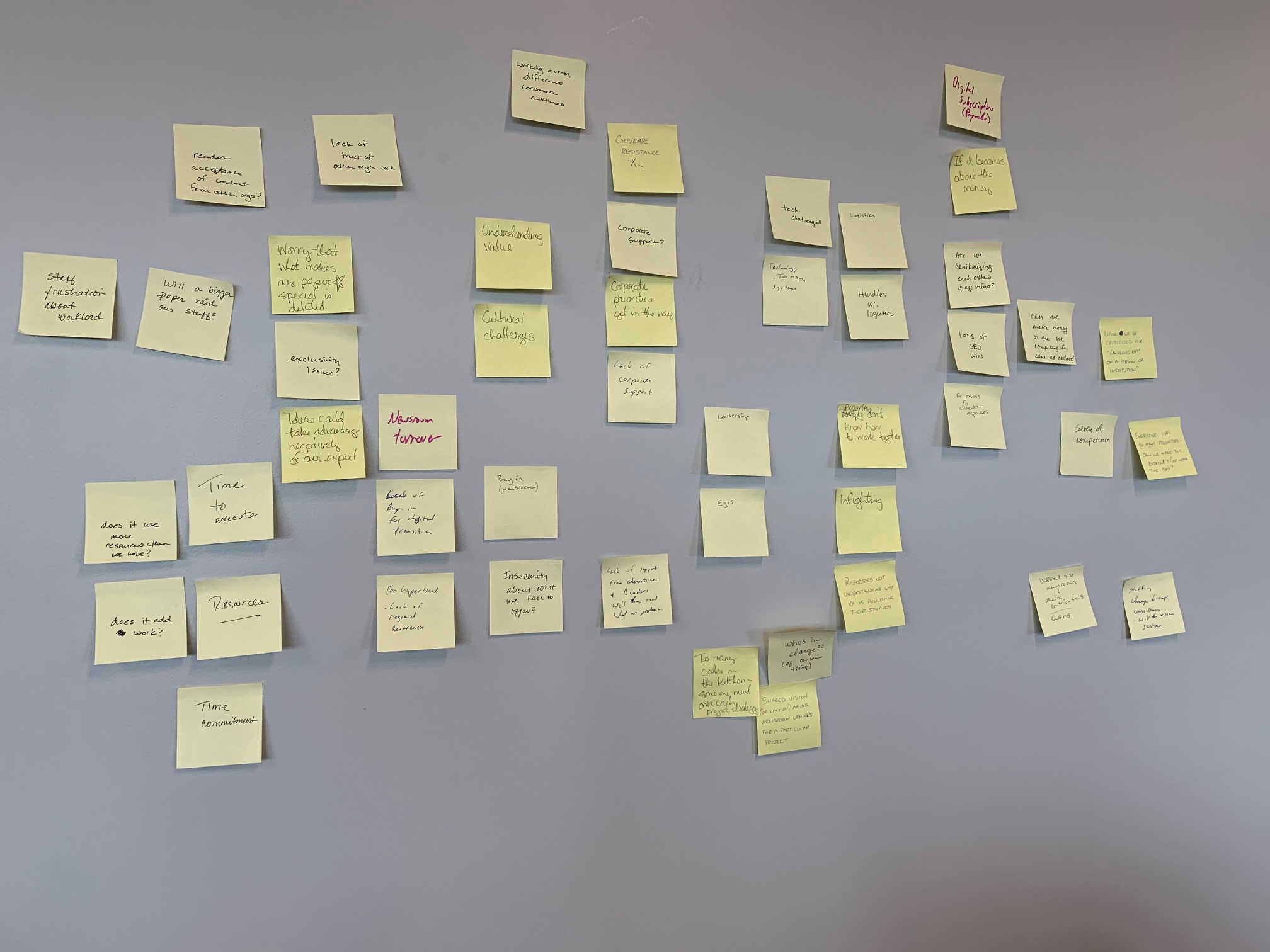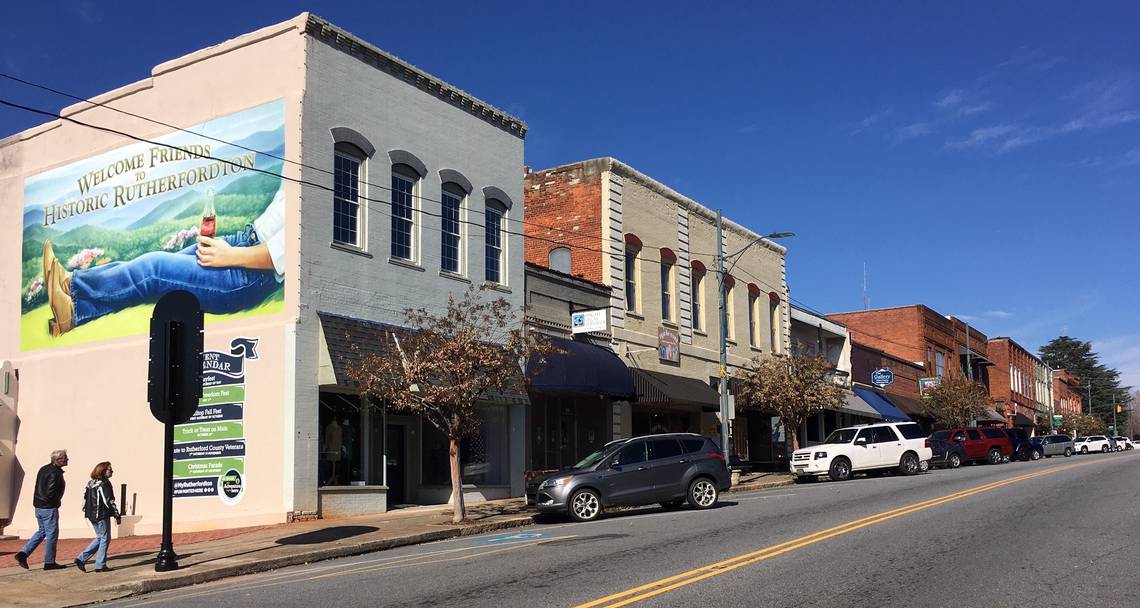Last summer, a group of editors in North Carolina gathered in a conference room for some brainstorming.
They covered one wall at the News & Observer with Post-It notes. They snacked on chocolate treats. It was a pretty typical meeting — except when you consider the people in the room.
They came from Gannett, Gatehouse, McClatchy and BH Media Group. In all, editors from 10 of North Carolina’s newspapers met with a goal that sounds simple but is definitely not.
They wanted to start working together.
Now, 22 newspapers in the state are part of the North Carolina News Collaborative, or NCNC ( “nick-nick”) for short.
Most of those papers have published for more than 100 years. But this is a first for all of them.
“Our egos were the biggest thing getting in the way of us doing this in the past,” said Robyn Tomlin, the executive editor of the News & Observer and Durham Herald-Sun and McClatchy’s Southeast Regional Editor.
Egos might seem like a luxury nowadays.
Newspaper employment shrunk 48% between 2008 and 2018, according to a study by Pew. In North Carolina, weekly and daily newspaper circulation dropped by 38% between 2004 and 2019, according to the University of North Carolina’s research on news deserts, and the state lost four dailies and 40 weeklies.
“Now we’re at a point when we recognize that in order for us to be as strong as we need to be for our communities,” Tomlin said, “we have to work together.”
Related: Want more on local news? Sign up for our weekly newsletter, Local Edition

Some of the Post-Its NCNC members created at their first meeting. (Image courtesy Pam Sander/Gatehouse)
Meet NCNC
It all started around a banquet table. At the North Carolina Press Association’s annual awards banquet last winter, several editors looked around and realized they were all facing the same issues.
Maybe they should harness that?
By early summer, they met in Raleigh.
They left with three goals for NCNC:
- Share content
- Share resources
- Look for additional resources to increase coverage of the rural area between newsrooms that have become and are becoming news deserts
They worked through the messy logistical issues that come with partnering across companies and platforms by creating a Slack channel. They created a protocol for republishing, including a canonical URL that gives search engine rank to the site of the original paper. And they created their first project.
It’s worked, Tomlin said, because many of the papers already had to figure out how to share content with different newsrooms in their own statewide groups.
And while it’s been great to share news about what’s happening around the state with local readers, said Pam Sander, Gatehouse’s Southeast region editor, it’s even more important to combine resources for bigger watchdog reporting.
In December, NCNC papers published a seven-part series about the growing rural/urban divide in the state.
“If nobody’s watching, people don’t always make smart decisions,” Sander said. “In fact, they make bad decisions even when people are watching.”
Related training: The power of public records
Better together
Working with people at the same company can be tough. But working with people at different companies, across platforms and corporate cultures?
“Anyone who has worked on a collaboration knows it’s a lot of work to make successful,” said Melanie Sill, a professor in the communications school at Davidson College and the former editor of the NC Local newsletter. Sill’s last edition focused on NCNC.
That collaboration’s reach and impact include statewide stories that some of the newspapers wouldn’t have had the resources to produce on their own, she said.
“I think it’s a hugely positive step.”
The challenge, Sill said, is figuring out how this kind of work can have the most impact. Maybe that means more resources for engagement work. Maybe it means broadening the collaboration to include public media in the state.
Collaborations can have a bigger reach when they involve a mix of newsrooms, including nonprofits and independents, said Stefanie Murray, director of the Center for Cooperative Media. Civic organizations, such as public libraries and ethnic and foreign-language media, also bring a diversity of reach and voices, she said.
In the past three years, Murray’s seen legacy newspapers in several states take part in collaborations and work together. And statewide and regional projects are growing, including statehouse coverage in Pennsylvania, Oregon and Illinois; environmental coverage in Florida, the Midwest and the Delaware River and Ohio Watersheds; and around voting in New Jersey. Public media has been the leader in state-wide ongoing collaboratives, Murray said.
What’s unique in North Carolina is that NCNC is a large group of papers working together on an ongoing basis, she said, and it’s not topic-focused.
“I don’t know that there is another one like that in the U.S. currently,” she said.
NCNC is starting now on a project looking at broadband across the state, said Katie Wadington, news director of the Asheville Citizen Times.
“That’s really something that I can’t tell out of Asheville by myself,” she said.
Not too long ago, newsrooms from different organizations hesitated to reach out to share content or work together. But those barriers can’t exist anymore, she said.
“We might compete on some things,” Wadington said, “but there’s no reason to compete on everything.”
NCNC newspapers: The (Asheboro) Courier-Tribune, The (Asheville) Citizen-Times, The Charlotte Observer, (Concord) Independent Tribune, The (Durham) Herald-Sun, The Fayetteville Observer, (Gastonia) Gaston Gazette, (Greensboro) News & Record, Hendersonville Times-News, Hickory Daily Record, The (Jacksonville) Daily News, The (Kinston) Free Press, The (Lexington) Dispatch, The (Marion) McDowell News, The (Morganton) News Herald, Mooresville Tribune, New Bern Sun Journal, The (Raleigh) News & Observer, Shelby Star, Statesville Record & Landmark, Wilmington StarNews and Winston-Salem Journal
Kristen Hare covers the transformation of local news for Poynter.org. She can be reached at khare@poynter.org or on Twitter at @kristenhare
.
Correction: A previous version of this story got Katie Wadington’s title wrong. She’s news director of Asheville Citizen Times. We apologize for the error. It has been corrected.








